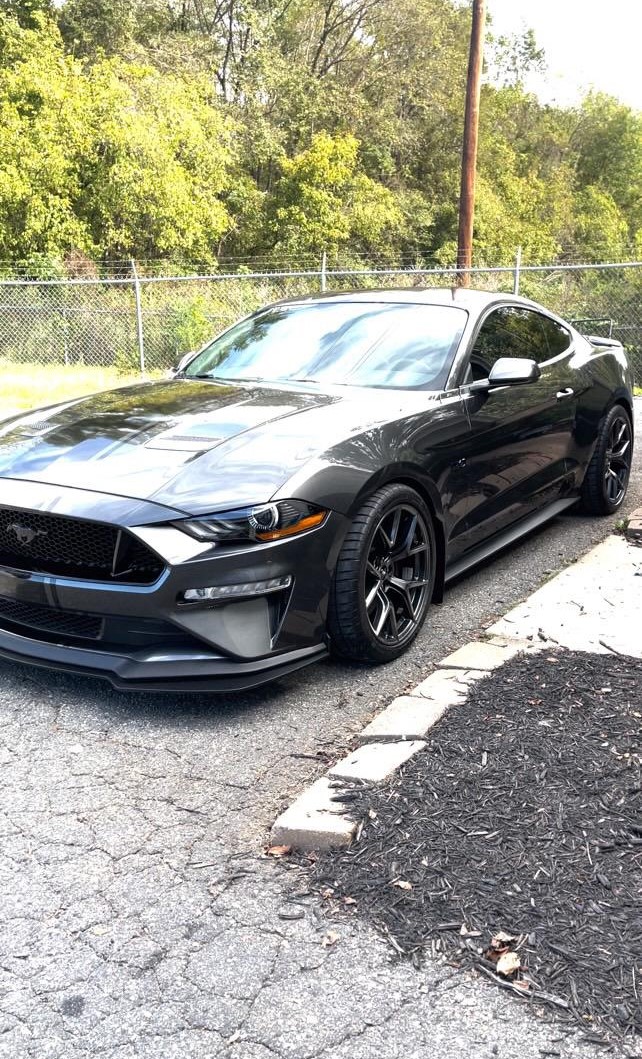Does your car look dull no matter how often you wash it? Ever noticed spiderweb-like scratches under direct sunlight? If that sounds familiar, you might be dealing with a paint problem. Specifically, your car could be begging for paint correction—a specialized process that brings back that showroom shine. In this article, we’ll explore every telltale sign that your vehicle’s paint needs professional attention and how services like those at Infinite Auto Works can make your car look brand new again.
Let’s get into the nitty-gritty of how to tell when it’s time to correct your car’s paint.
What Is Paint Correction and Why Does It Matter?
Before we dive into the signs, let’s quickly get one thing straight: paint correction isn’t just a fancy word for polishing. It’s a technical process that removes defects in your vehicle’s clear coat, not just masks them.
Using machine polishers, cutting compounds, and expert techniques, skilled professionals can level the clear coat to erase imperfections like swirl marks, oxidation, and micro-scratches. When done right, your car’s finish looks smoother, shinier, and more reflective than ever.
The pros at Infinite Auto Works explain that paint correction is one of the most cost-effective ways to restore your car’s value and visual appeal—without needing a respray or bodywork.
1. Swirl Marks in Direct Sunlight
What Are Swirl Marks?
Those ghostly spider-web patterns you see under bright sunlight? Those are swirl marks. They’re usually caused by improper washing, drying with dirty towels, or low-quality automated car washes. They reflect light unevenly and make your car look tired and neglected—even if it’s clean.
Why They Matter
Swirl marks aren’t just cosmetic annoyances—they’re proof that your paint’s protective layer is breaking down. Left untreated, they make your car’s surface vulnerable to more serious damage like oxidation or deeper scratches.
2. Oxidation and Faded Paint
What Is Oxidation?
Oxidation is what happens when your car’s paint loses its oils and protective components due to prolonged exposure to UV rays and environmental elements. The result? A chalky, flat, or faded appearance—especially on the roof, hood, and trunk.
How Paint Correction Helps
Paint correction works like a time machine for your car’s finish. It removes the oxidized layer and revives the vibrant color underneath. Infinite Auto Works recommends pairing this with a ceramic coating for lasting protection against future UV damage.
3. Fine Scratches All Over the Surface
Where They Come From
You might think you’re being careful, but scratches can sneak in during routine washes, wiping with a dry towel, or even brushing up against the car with a bag. Over time, these micro-scratches accumulate, making your car look worn and unkept.
How to Spot Them
Run your fingers gently across the paint. Does it feel rough? In certain lighting, do you see tiny straight lines or zigzags? If yes, you’re looking at clear coat damage that needs correction.
4. Water Spots and Mineral Deposits
The Hard Water Effect
Parked outside during a rainstorm? Washed your car with hard water and didn’t dry it? You’re probably dealing with water spots—stubborn mineral deposits that get etched into your paint.
Why They’re Hard to Remove
These aren’t your average surface stains. Hard water spots can etch into the clear coat, making them nearly impossible to remove with normal washing. Paint correction cuts through the damaged layer and eliminates those etched-in spots for good.
5. Hazy or Dull Finish
Not All Shine Is Equal
If your car used to glow but now looks dull—even after waxing—your clear coat is probably oxidized or covered in micro-abrasions. A hazy appearance is often a sign that light isn’t reflecting uniformly due to surface imperfections.
What Paint Correction Fixes
Paint correction levels out those imperfections and restores a deep, wet-gloss look. It’s the kind of transformation you’ll notice the moment you see your reflection in the hood again.
6. Holograms and Buffer Trails
Signs of Improper Polishing
Have you ever noticed weird, rainbow-like patterns or ghostly trails in your paint under bright lighting? Those are called holograms or buffer trails, and they’re often the result of incorrect machine polishing.
A Job for the Pros
These visual distortions can’t be wiped away—they require another round of proper paint correction to fix. Professionals like the team at Infinite Auto Works use the right pads, polishers, and compounds to refine the paint safely and evenly.
7. Contaminated or Gritty Paint Surface
Feel the Paint
Here’s a quick test: Run your hand over the paint after washing. Does it feel smooth, or does it feel like sandpaper? If it’s gritty, you’ve got bonded contaminants stuck in your clear coat.
More Than Just Cleaning
A clay bar treatment removes surface-level junk, but paint correction digs deeper—removing defects that cling to your paint even after decontamination.
8. Inconsistent Gloss and Reflection
Uneven Shine is a Red Flag
When your car’s finish looks glossy in one area and dull in another, it’s a sign of uneven clear coat condition. This patchiness can occur from bad washing habits or previous touch-ups.
Why Correction Makes a Difference
Paint correction smooths and evens out the entire panel, so the finish reflects light uniformly. The result? A richer, more cohesive shine from bumper to bumper.
9. You’re Applying Ceramic Coating or Wax
Don’t Coat Over Imperfections
Planning to apply a ceramic coating? Applying it over scratches, swirl marks, or haze just locks those flaws in permanently. That’s a waste of time and product.
Paint Correction Is Step One
Before sealing in your paint with a coating, correct it first. That way, you’re preserving a flawless finish—not hiding damage.
10. Recently Bought a Used Car
The Truth About “Detailed” Cars
Dealerships love to say a car was “just detailed,” but that often means a quick wax and vacuum. Used vehicles typically have years of wear and tear on the paint, even if they look clean.
Reset the Clock
Paint correction from a shop like Infinite Auto Works gives your used vehicle a clean slate—removing old scratches and restoring its original shine. It’s the best way to make your “new-to-you” car feel brand-new again.
What Causes Paint Defects in the First Place?
Paint imperfections are more common than you think. Here are the usual suspects:
- Automatic car washes with abrasive brushes
- Dirty or rough towels during drying
- Harsh chemicals and cleaners
- UV damage and sun exposure
- Tree sap, bird droppings, bug splatter
- Inexperienced polishing or waxing
Understanding what causes these flaws is the first step to preventing them in the future.
What Happens If You Ignore the Signs?
Ignoring the early signs of paint damage won’t make them go away. In fact, they’ll get worse over time:
- Swirl marks multiply
- Scratches deepen
- Oxidation spreads
- Paint starts to peel or flake
Eventually, your car may need costly repainting, which is far more expensive than preventative correction. Catching these signs early saves money and preserves your vehicle’s value.
When to Visit a Professional for Paint Correction
If you’re unsure, it’s better to get an expert opinion. Professional detailers—like those at Infinite Auto Works—use paint thickness gauges, lighting tools, and trained eyes to evaluate your car’s condition accurately.
They can recommend whether you need a light one-step polish or a full multi-stage correction, based on the damage and your goals.
How to Keep Your Paint Looking Perfect Post-Correction
Once your paint is corrected, proper care will extend its life:
- Use the two-bucket method for washing
- Dry with clean microfiber towels only
- Apply a ceramic coating or high-quality sealant
- Avoid automatic car washes
- Use pH-balanced soaps and detailing sprays
Consistent maintenance prevents the same defects from coming back, keeping your ride showroom-fresh.
Final Thoughts – Don’t Let Flaws Define Your Finish
Your car’s paint is more than just color—it’s the first thing people notice and the surface that protects everything beneath. Catching the signs early and taking action with professional paint correction can breathe new life into your vehicle.
Whether it’s swirl marks, oxidation, scratches, or hazy reflections, these issues won’t fix themselves. But the good news? They’re all reversible. And when done by experts like Infinite Auto Works, the results are jaw-dropping.
So, take a good look at your car under the sun. If it’s not turning heads like it used to, maybe it’s time to bring back the shine it deserves.
FAQs – Paint Correction Signs and Solutions
Q1: Can paint correction fix deep scratches?
No, paint correction only removes surface-level imperfections in the clear coat. Deep scratches that reach the base coat may require touch-up paint or body repair.
Q2: How long does paint correction take?
It depends on the condition of your vehicle and the correction level. A one-step polish may take 4–6 hours, while multi-stage correction could take 1–2 full days.
Q3: Is paint correction safe for all vehicle types?
Yes, when done correctly. Professionals like Infinite Auto Works assess your paint thickness and use safe tools to ensure no damage is done.
Q4: Will waxing help hide swirl marks?
Wax may temporarily fill in light swirls, but it doesn’t fix the problem. Paint correction removes the damage instead of masking it.
Q5: How often should I get paint corrected?
With proper care, paint correction should only be needed every 1–3 years. Regular maintenance and coatings can greatly extend the life of the correction.



